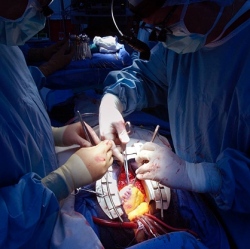
Autodesk’s software may be best-known for helping architects design buildings or for prototyping products, but it soon may be applied to designing tissues and organs.
Autodesk and Organovo, a publicly-traded bioprinting company, are partnering on software for designing three-dimensional human tissues. While it’s still a few years too early for these tissues to be applied in treating humans, Organovo-printed tissues are already used in medical research.
Organovo, which went public earlier this year through a small cap offering and has a market cap of $98 million, manufactures a bioprinter that can create 1 millimeter-thick tissues. Based on research out of the University of Missouri, the company’s technology creates a bio-ink from cells and deposits new cells in a layer-by-layer matrix according to a computer design.
“This could give us power to recreate human tissues and organs outside of the body, but you still have to build blood vessels and you need fairly intricate designs,” said Keith Murphy, the company’s CEO.
As those designs become more intricate, the company’s management realized there would be a need for design software. Organovo could have gone down this path alone, but the company’s management realized that having an experienced partner like Autodesk might help.
Autodesk, a company with a $7.8 billion market cap that builds software for product designers, architects, animators and more, has a small, but growing team focused on bio and nano-programmable matter. The 14-person team partners with researchers at universities like UC Berkeley on synthetic biology projects.
